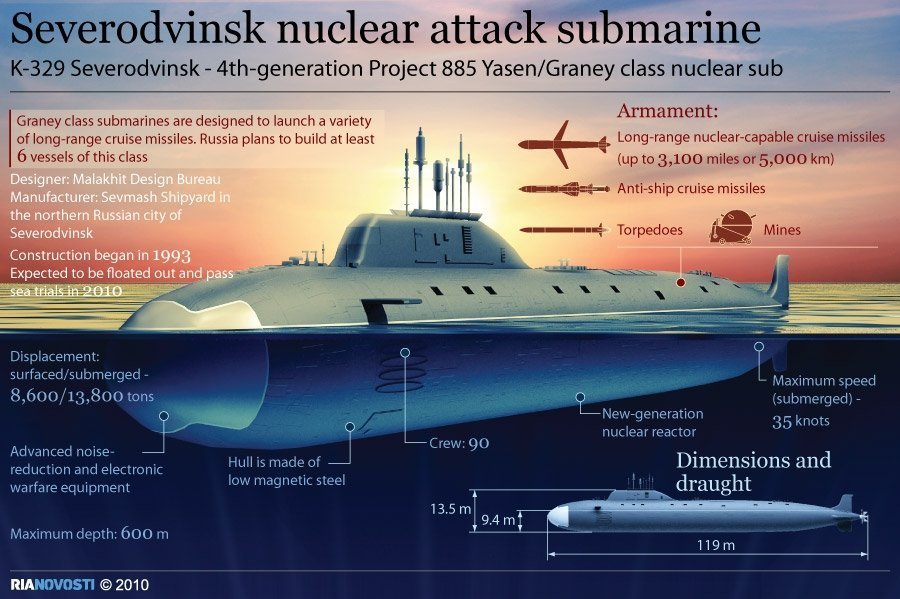

There are college sophomores who were born after Russia began building its newest submarine. The K-329 Severodvinsk (re-designated the K-560 Severodvinsk in late 2013) is a submarine powered by a nuclear reactor and is made to hunt other submarines, ships, and targets on land. Construction started in 1993; the ship underwent sea trials in 2011; and on Tuesday, Russia finally commissioned the vessel and welcomed it into the Northern Fleet.
Why did the submarine take so long to complete? Soviet collapse, mainly. The USSR, which had channeled much of Russia’s resources into building a military to compete with the United States throughout the Cold War, broke apart in the early 1990s, and when the government fell so did its ability to keep up with military production. In 2008, flush with money from the export of natural resources, Russia announced that nuclear submarines were a top priority. Today, with Russia actively reasserting its role in the world (read: invading neighboring Ukraine), Russia now has evidence that its fleet rebuilding efforts are starting to pay off.
According to Russian state media company RT, the submarine features a large advanced sonar array, which necessitated moving the torpedo tubes away from the nose. Russia claims that the sonar is a spherical array, which can see a larger picture underwater than a simpler cylindrical configuration. The Severodvinsk also carries the supersonic Onyx anti-ship cruise missile and the Kalibr land-attack cruise missile. These are deadly weapons, and make the submarine a threat to far more than just ships on its own. The Onyx has a range of 180 miles and the Kalibr can hit targets as far away as 170 miles.
Curiously, the procurement contract for the missile loader mentions a third variety of missile: the 9K. This is a designation given to either anti-tank missiles or anti-air missiles—since this is a submarine, anti-tank is out of the question. If the Severodvinsk is carrying a 9K anti-air missile, it’s likely the 9K38 Igla or a variation thereof, which means this submarine could potentially shoot down airplanes coming to destroy it.
The Severodvinsk is the first of the Yasen class submarines, designed as both a multi-purpose submarine and a direct challenge to the American Virginia-class modern attack submarines, the first of which entered production in 1999 before commissioning in 2004. Since then, the U.S. Navy commissioned ten more Virginia-class submarines, with seven more planned and a total order for 28 submarines. While the completion of the Severodvinsk is a big step for Russia’s navy, in order to rival America submarines, production of the next Yasen class subs will have to be about five times as fast.
